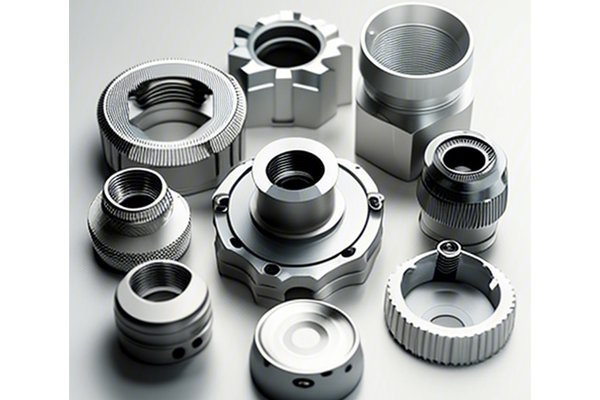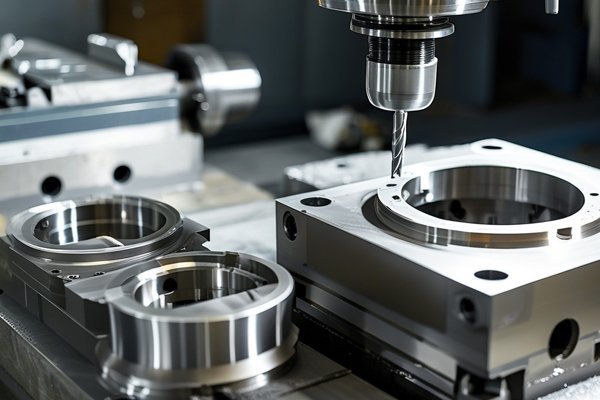Did you know that nearly 95% of manufacturing companies rely on CNC machining to create precision parts? This statistic reflects the critical role of CNC (computer numerical control) machining in modern manufacturing, particularly when producing custom components in materials such as aluminum. As industries demand quicker delivery times and high-quality outputs, understanding the factors affecting turnaround times for CNC machining has never been more important.
As a business or technician engaged in the manufacturing process, recognizing these factors can help you streamline production, boost efficiency, and, ultimately, enhance customer satisfaction. This blog will dive deep into the various elements that influence CNC machining turnaround time for custom aluminum parts, providing you with essential insights and practical solutions.
—
Understanding CNC Machining and Its Importance
CNC machining is a manufacturing process that uses computers to control machine tools. These tools include lathes, mills, routers, and grinders that cut and shape materials like aluminum into intricate designs with high precision. The importance of CNC machining can be underscored by several factors:
Given these benefits, improving turnaround time becomes crucial in maintaining competitiveness in the market. But what precisely influences the lead time for CNC machining services?
Key Factors Affecting CNC Machining Turnaround Time
The design complexity of the custom aluminum parts directly impacts machining time. Intricate designs with tight tolerances require more setup time and advanced programming. Additionally, complex geometries may necessitate multiple operations or tool changes, extending the production timeline.
Solution: Collaborate with experienced designers who understand the capabilities and limitations of CNC machining to create designs that are optimized for manufacture. Utilizing design software that simulates machining processes can also help identify potential complications before production begins.
Using aluminum is popular in many industries due to its lightweight and high-strength characteristics. However, the specific grade and thickness of aluminum can impact machining times. For instance, softer aluminum alloys may require less time to machine than harder variants.
Solution: Choose the most suitable aluminum alloy for the application at hand. Consulting with material suppliers or manufacturers who have experience with different grades can yield insights into which material will balance performance and machining efficiency.
The type of CNC machine and the technology used for production can significantly affect turnaround times. Advanced 5-axis CNC machines are capable of performing multiple processes simultaneously, which can dramatically reduce machining time compared to standard 3-axis machines.
Solution: Invest in advanced technology suited for the specific production needs. Evaluate whether newer machines with faster cycle times and multi-tasking capabilities would provide a competitive advantage in terms of lead time.
The time required to program CNC machines and set up the tools before actual production starts can take a considerable amount of time. Setup involves aligning the machine, loading the material, and ensuring that everything is calibrated correctly.
Solution: Streamline programming processes with effective software packages that offer simulation and toolpath optimization features. Utilize standardized procedures for setups to minimize delays during the transition from design to production stage.
Larger production runs tend to have shorter lead times per unit due to economies of scale. Conversely, smaller orders may incur longer wait times relative to the amount produced.

Solution: If possible, combine smaller orders into a larger batch to take advantage of more efficient production processes. Implementing a just-in-time (JIT) inventory approach can help in managing order sizes and timelines.
Strong relationships with suppliers can significantly impact the turnaround time. Timely delivery of raw materials is crucial to maintain production schedules. Delays in material sourcing can ripple through the entire production workflow.
Solution: Establish reliable contacts with reputable suppliers and consider sourcing materials in bulk or through long-term contracts to secure timely deliveries. Keep an open communication channel to track order statuses.
The skillset and experience of the workforce directly influence production efficiency. Highly skilled machinists can identify and address issues quickly, ensuring smoother operations.
Solution: Invest in workforce training and development, creating a program for continual education regarding the latest CNC machining technologies and techniques. A skilled workforce can lead to faster problem-solving and enhanced productivity.
Quality assurance processes, while essential for maintaining standards, can sometimes slow down production. Extensive testing and inspections add steps to the manufacturing cycle that may prolong the time until delivery.
Solution: Integrate quality control measures into the machining process itself and utilize statistical process controls (SPC) to monitor quality in real-time. This approach can reduce end-of-line inspection times and enhance overall efficiency.
Understanding and communicating lead time expectations with clients sets the tone for the engagement. Clients with unrealistic expectations can create pressure on manufacturing schedules.
Solution: Be transparent with customers about potential turnaround times. Setting realistic expectations early helps manage both customer satisfaction and operational schedules better.
—
Strategies to Optimize Turnaround Time
Now that we have identified key factors affecting turnaround times, let’s discuss strategies to optimize them effectively:
In the competitive landscape of manufacturing, understanding the factors affecting CNC machining turnaround time for custom aluminum parts is essential for success. Complex designs, material selection, technology choices, programming efficiencies, and workforce skill all play pivotal roles in determining how quickly a project can move from conception to delivery.
Investing in solutions that address these factors—whether through improved design collaboration, advanced machinery, or training programs—can yield significant returns in terms of efficiency, cost savings, and customer satisfaction. As market demands continue to evolve, staying ahead in turnaround times is not just an operational necessity; it’s a strategic advantage.
The insights provided in this blog offer a comprehensive roadmap to help businesses rethink their CNC machining operations for improved turnaround times. Optimizing these processes can set you apart in a market where speed and quality are of utmost importance.






